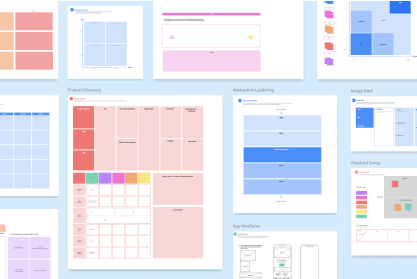Working from home used to be a perk that some employees enjoyed. Then COVID-19 forced companies to suddenly shift most, if not all, employees to work from home. The transition has been rocky. However, for some companies, it was relatively painless. No matter the impact or experience of rolling out a flexible work arrangement, the workforce--managers and employees--have differing views and experiences.
At Bluescape, we set out to understand how management and employees view flexible work arrangements. We are excited to announce that we are publishing findings from our first annual report on this topic: 2020 State of Working from Home Report.
In this post, I include insights from our inaugural report based on management responses. To read the full report, including perspectives from employees, download your complimentary copy.
Management Views on Remote Work Challenges
We asked both managers and employees what challenges they face when working remotely. In the chart below, 47% of managers struggle mostly with adapting how they lead a remote workforce. Aside from a day of back-to-back video meetings and taming crazy hair, here are some specifics managers told us that make leading today difficult.
Maintaining accountability to results and deadlines
Keeping communication timely and transparent
Remotely hiring and onboarding new talent.
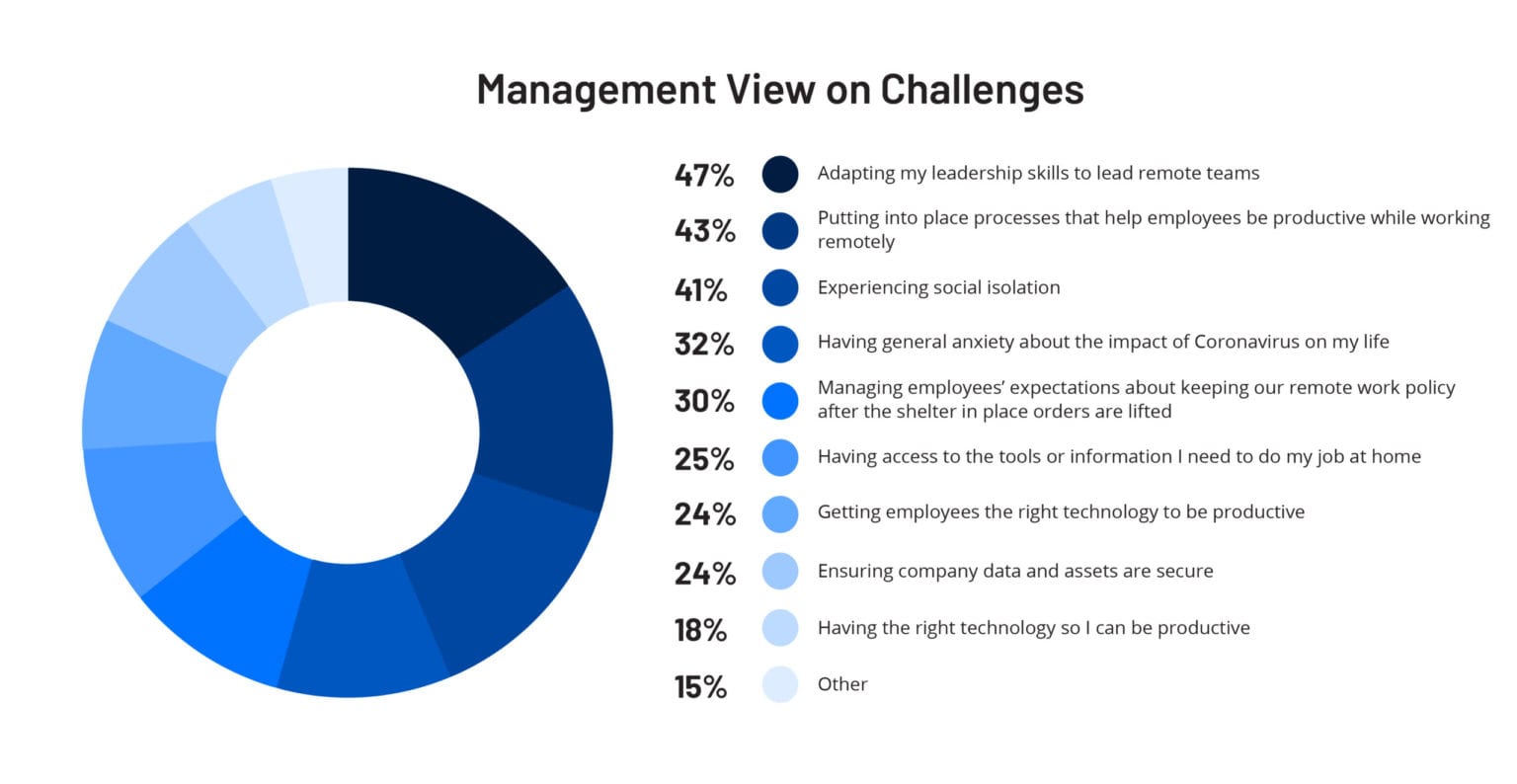
Readiness on Keeping Remote Work Post-COVID-19
For many organizations, the shelter-in-place orders forced their hand in implementing a remote work program. In our survey, 50% of managers believe their company is ready to keep its working from home program.
The optimistic view is vital as all companies work to mature their remote work program. The confidence will help companies better address the struggles that come with a remote workforce. What's more, optimism will also help leaders develop solutions to meet the needs of their employees.
What’s hard is the uncertainty. It’s uncertain when employees can return to the office or if they will. Some companies, like Facebook, will have some employees work remotely for the next five to ten years. Others, like Nationwide Insurance, are keeping some of their workforce 100% remote.
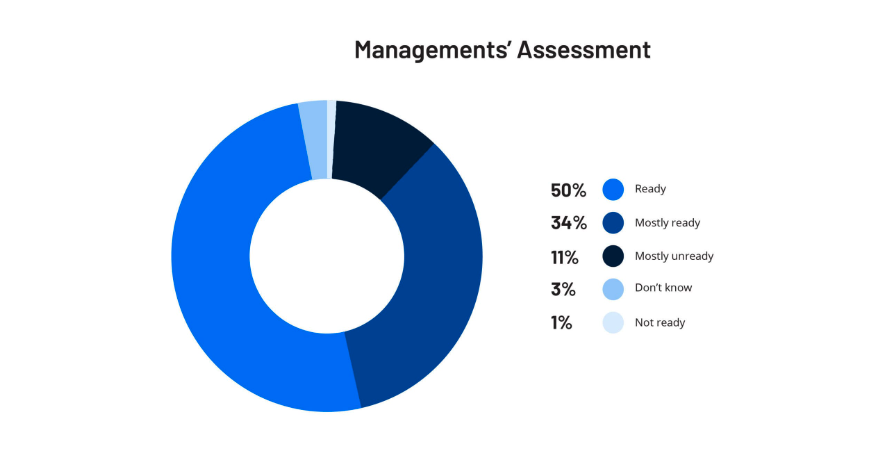
Download the full report to see how managers’ and employees’ views compare on company readiness to keep a remote workforce.
Top Jobs Likely to Be 100% Remote
Unexpected changes can bring about new ways of doing business. In this case, leaders are now seeing the added human and business value of keeping some of their workforce 100% remote. From increased productivity to savings on real estate expenses, the benefits from working remotely have shown executives there are financial outcomes. These outcomes guide companies in determining which job functions don't have to return to the office.
Managers told us that these are the top 10 job functions that won’t return to the office:
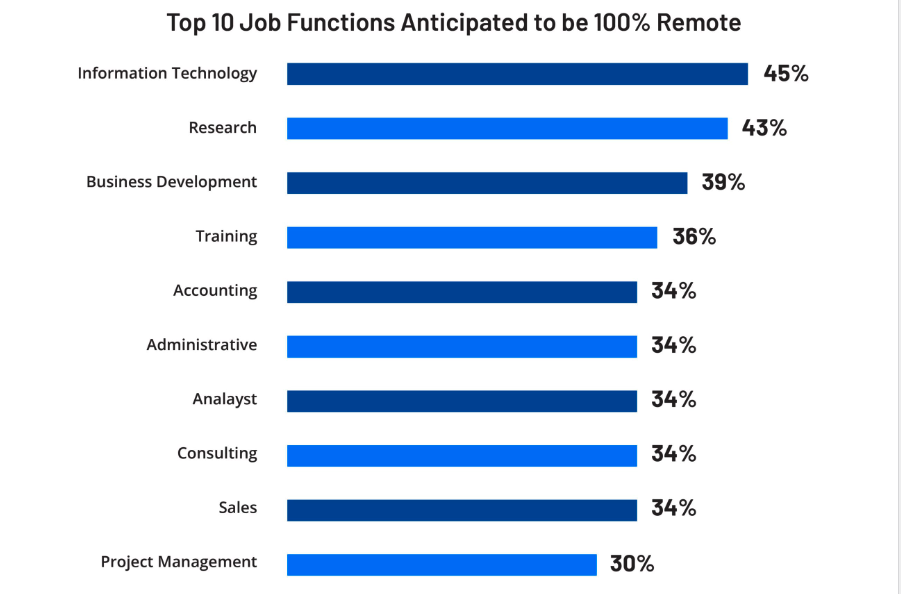
Well-being Concerns
A significant finding from our survey centers on well-being themes. Both management and employee survey responses and comments indicate that working remotely has increased anxiety, loneliness, and stress levels.
On the whole, 44% of respondents say they feel tired from working long hours. Developing boundaries between personal and work life was a strong theme in comments shared with us. Ultimately, companies will need to offer training and resources to help all levels of employees to develop practices that don’t undermine their wellbeing, and, ultimately, their performance and productivity.
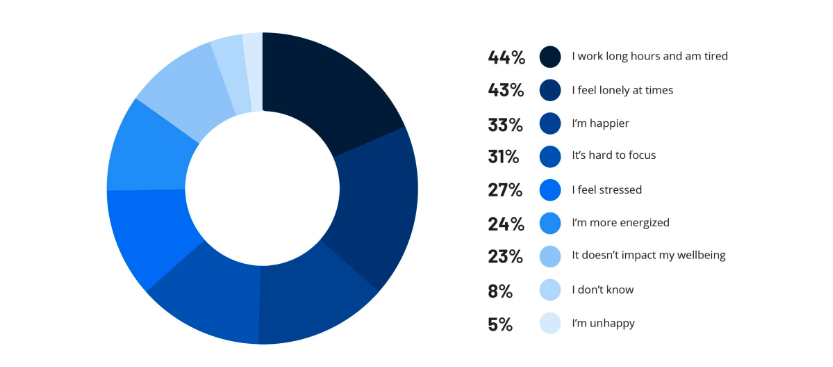
Top Skills Needed to Work Remotely Effectively
Working remotely calls upon different skills and reinforces other skills. The graph below shows the combined input from managers and employees.
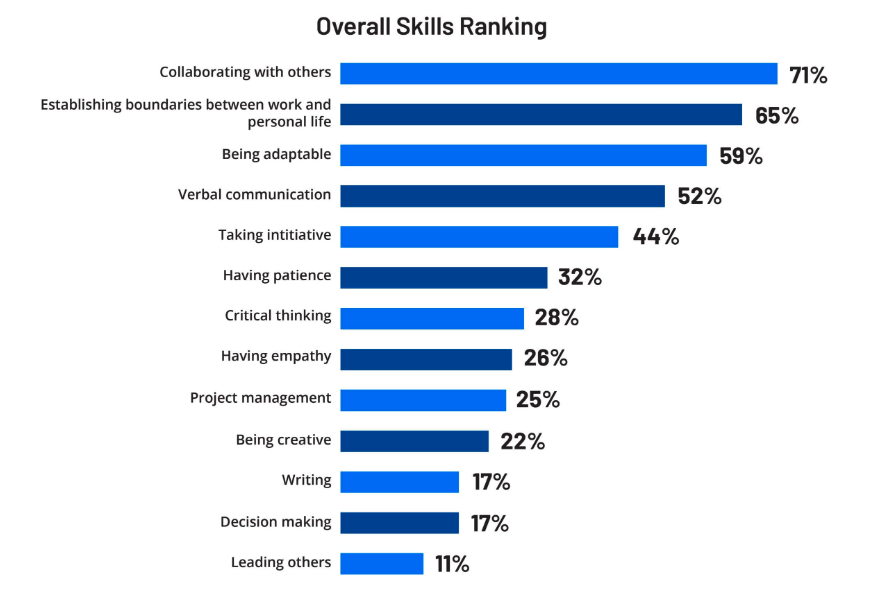
Top Security Concerns for a Remote Workforce
As more employees work remotely, enterprise security concerns increase. From video meetings interrupted by uninvited guests to executives worrying worries employees don’t know or follow company security policies, leaders struggle to keep company assets and intellectual property secure.
We asked management what their top security concerns are, and here is what they shared with us.
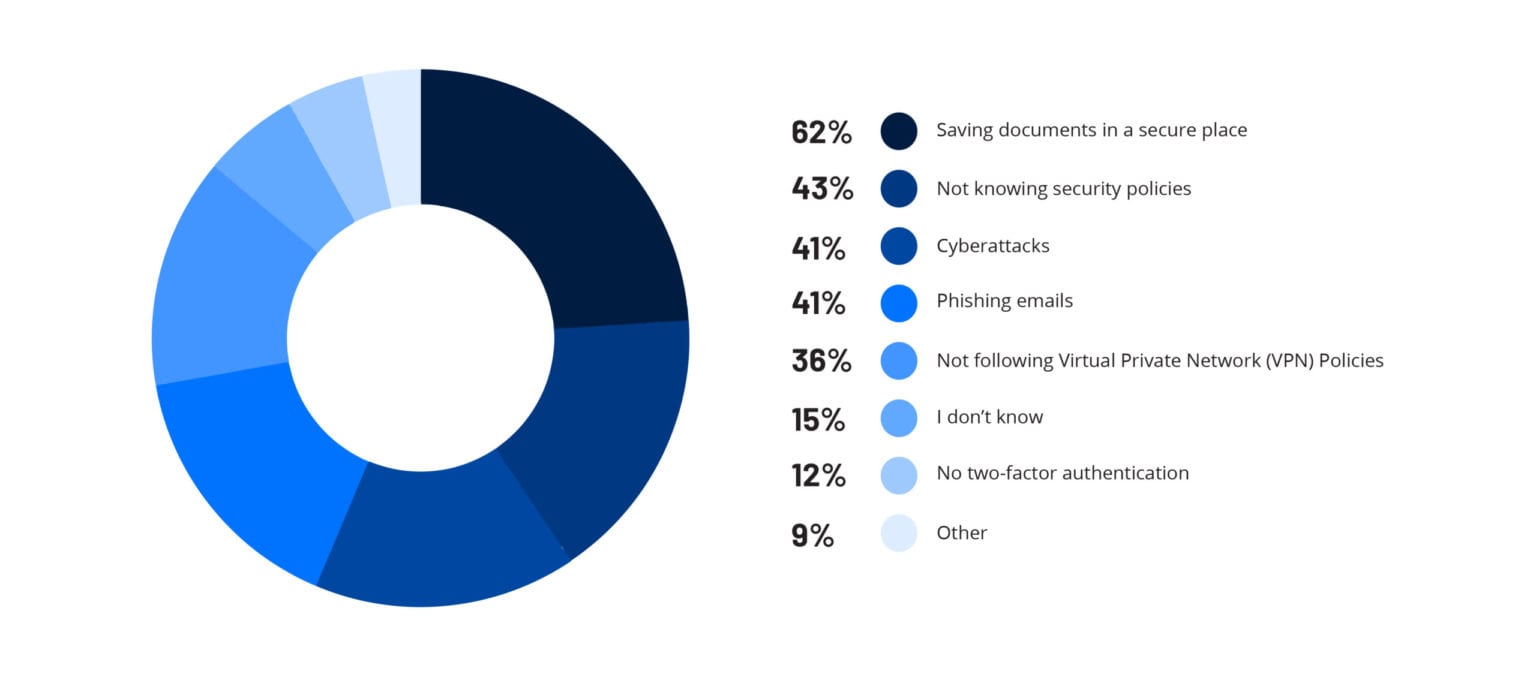
Making remote work workable for everyone comes with challenges. However, they are not insurmountable. With the right technology, operational processes, and a focus on getting the workforce what they need, companies can design a successful work-from-home solution.
Our full survey reveals where the two are aligned and where differences emerge. Understanding begins, however, with learning how management and employees view the flexible work arrangement. Equally as important, senior leaders need to understand their role in making working from home a successful option for everyone.
Download a free copy of the 2020 Work from Home Report here.





